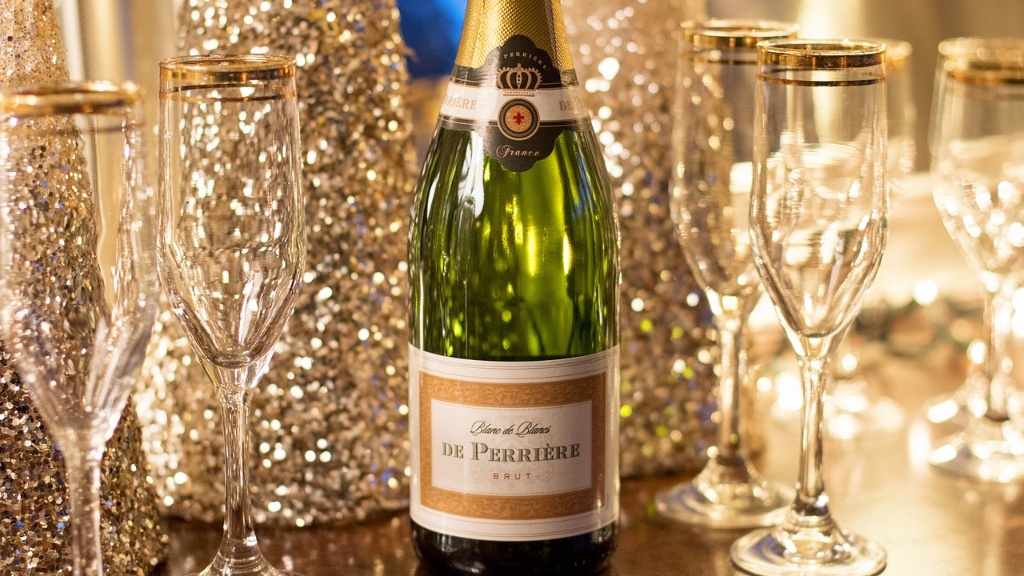Top 10 Must-Visit Vineyards In Tuscany
Italy is a country with a rich food and wine culture, and Tuscany is a region that has earned recognition as one of the best wine producing areas in the world. From San Gimignano in

Italy is a country with a rich food and wine culture, and Tuscany is a region that has earned recognition as one of the best wine producing areas in the world. From San Gimignano in the north to Montalcino in the south, the region has over 100,000 hectares dedicated to vineyards. Tuscany is famous for its Sangiovese grape, which produces red wines that are complex and full-bodied. Here are the top 10 must-visit vineyards in Tuscany.
1. Antinori nel Chianti Classico – This historic vineyard was founded in 1385 and has been in the Antinori family for 26 generations. The vineyard is famous for its Chianti Classico Riserva and Tignanello blend.
2. Castello di Ama – This vineyard is located in the hills of Gaiole in Chianti and is famous for its Chianti Classico wines. The vineyard has been certified organic since 2000 and is dedicated to sustainable practices.
3. Tenuta di Valgiano – This vineyard produces organic and biodynamic wines, using practices that are environmentally friendly. The vineyard is located on the hills overlooking Lucca and produces wines that are known for their elegance and complexity.
4. Casanova di Neri – This vineyard is located in Montalcino and produces the famous Brunello di Montalcino. The vineyard is known for its balanced and elegant wines that express the terroir of the region.
5. Il Borro – This vineyard is located in the heart of Tuscany and is part of an estate that dates back to the 13th century. The vineyard produces a range of red wines that are characterized by their power and finesse.
6. Petrolo – This vineyard is located in the Val d\’Arno, in the heart of Chianti. The vineyard produces a range of wines, including the Galatrona, which is considered one of the best Merlots in Italy.
7. Tenuta Sette Ponti – This vineyard is located in the hills of Arezzo and produces a range of red wines that are known for their depth and complexity. The vineyard has been a pioneer in the use of international grape varieties in Tuscany, including Cabernet Sauvignon and Syrah.
8. Fattoria Le Pupille – This vineyard is located in the Maremma, in southern Tuscany. The vineyard is famous for its Super Tuscan wines, including the Saffredi and the Lupicaia.
9. Querciabella – This vineyard is located in the Chianti Classico region and produces a range of organic and biodynamic wines. The vineyard is known for its Supertuscan wines, including the Camartina and the Palafreno.
10. Fontodi – This vineyard is located in the heart of Chianti Classico and is known for its Sangiovese-based wines. The vineyard is dedicated to sustainable practices and produces a range of wines that reflect the terroir of the region.
Visiting these vineyards is not just about tasting wine but also about experiencing the unique culture, history and landscape of Tuscany. Some vineyards offer guided tours, wine tastings, and even wine-making classes. These experiences can educate and engage visitors, allowing them to gain a deeper appreciation for the world of wine.
Tuscan Wine Regions and Grapes
Tuscany has a diverse range of wine regions and grapes which contribute to the richness of the Tuscan wine culture. Chianti, Montalcino, and Montepulciano are three important DOCG wine regions in Tuscany. Chianti, located in central Tuscany, is known for its Sangiovese grape variety. It is said that Sangiovese is the soul of Chianti wine. Montalcino, located in southern Tuscany, is famous for its Brunello di Montalcino wine, made with 100% Sangiovese grape. Montepulciano, located in southeastern Tuscany, is known for its Vino Nobile di Montepulciano wine. This wine is made with Sangiovese, Canaiolo Nero and Mammolo grapes.
Supertuscan Wines
Supertuscan wines are wines that don\’t follow the traditional Tuscan winemaking laws. They are a blend of international grape varieties like Cabernet Sauvignon, Merlot and Syrah with the native Sangiovese grape. The term \’Supertuscan\’ was coined in the 1970s. Sassicaia, Tignanello and Ornellaia are three famous Supertuscan wines produced in Tuscany. Supertuscan wines are known for their richness, intensity and complexity.
Tuscan Wine and Food Pairing
Food and wine pairing is an art, and Tuscany offers a unique range of wine and food combinations. Tuscan wines are best paired with dishes that are hearty and flavorful. Chianti wine goes well with tomato-based pasta, grilled meats, and aged cheeses. Brunello di Montalcino wine is best paired with roasted meats, game, and truffles. A glass of Vin Santo, a Tuscan dessert wine, is a perfect complement to cantucci, a Tuscan almond biscotti.
Tuscan Wine Tourism
Tuscany is a popular destination for wine tourism. Each vineyard offers its unique wine experiences ranging from wine tastings, vineyard tours, and cooking classes. Wine lovers can immerse themselves in the world of wine, gain knowledge, and experience the Tuscan lifestyle. There are several wine festivals and wine-related events held throughout Tuscany. Some of the popular events include the Chianti Classico Expo, held in Greve in Chianti, and the Vernaccia di San Gimignano festival, held in San Gimignano town.

